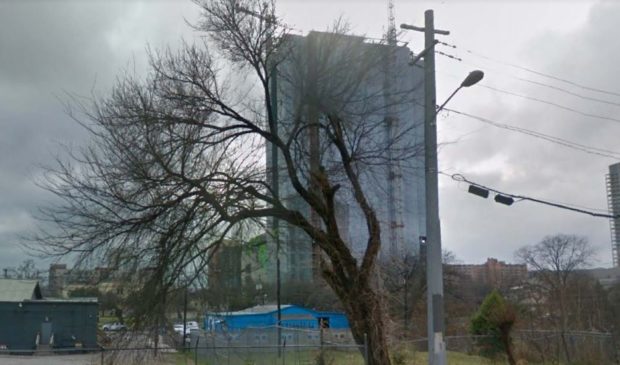Planning Commission approves the removal of a heritage tree downtown
Wednesday, October 17, 2018 by
Alyx Wilson The Planning Commission approved a rare heritage tree variance at a recent meeting.
The commission only sees cases like this one, where people are looking to remove protected trees that exceed 30 inches in diameter, once a year or less. This particular case dealt with two trees on a lot between Third and Fourth streets, Interstate 35 and Waller Creek downtown.
“We have to stop making silly decisions and start making a real change in this city and get as many housing units as we can in a walkable, bikeable environment. We can’t sacrifice one home for a failing tree,” said Commissioner Greg Anderson.
The developer hopes to build up to 263 new housing units on the lot and explained that leaving both of the trees could reduce the overall housing units by 30 percent.
Commissioners focused particularly on a pecan tree with a 37-inch diameter that sits on the edge of the lot. City Arborist Keith Mars said even with no construction at all, there is a good chance of the tree dying in the next five years.
Commissioner Karen McGraw felt that the request for the variance was unfair to Austinites who had been made to protect trees on their lots during construction, including herself.
“I just spent a lot of money to take care of a 36-inch pecan during construction, so I think what I’m hearing is that was a waste and it’s going to die in the next 10 years,” said McGraw.
Mars said that the cases vary, and the decisions are made by looking intently at the baseline health of each tree. He explained that this particular pecan tree has already lost much of its canopy, and not a single limb of the tree is still fully intact, likely due to storm damage.
“Even with code-compliant construction and proper pruning there wouldn’t be much of the canopy left. The tree would be unlikely to survive construction. Trees that are already in poor condition continue to decline,” said Mars.
“I want more work put into the pecan because it’s our state tree,” said Commissioner Patricia Seeger. Seeger asked if any plans were put in place to attempt to restore the tree to health.
“This did go to the Environmental Commission, and the questions you are asking were all talked through extensively. The city’s experts and our experts decided that the increase in the mitigation package was better for the city than a tree that may not survive the next five years,” said Amanda Swor, who was representing the applicant.
The Environmental Commission requested that the developer include a 300 percent mitigation on the trees compared to the usual 150 percent mitigation. This means that for every 30 inches of tree the city loses, the developer agrees to plant an additional 90 inches of tree.
“We have the support of the Environmental Commission, city staff, the applicant. We have a 300 percent mitigation and trees that are going to be added to this project that we can enjoy for generations instead of one big dying tree,” said Anderson. Anderson said he couldn’t call the decision anything less than a “no-brainer.”
“We have one of the most progressive tree regulations in the country, and we take that very seriously. You don’t see many of these, and the questions you’re asking we ask on a day-to-day basis,” said Mars, explaining that he did appreciate and understand the commission’s concerns.
Mars confirmed for the commission that he had a master’s degree in forestry, and that the Development Services Department saves about 95 percent of all heritage trees.
Commissioners Angela De Hoyos Hart and Conor Kenny agreed that the current Land Development Code is too rigid if they could not pass this variance.
“It boggles the mind that he brings us one tree a year that they think we can’t save, and we appear with no arborist training that I am aware of, and we will override the opinions of a professional arborist,” said Kenny.
Commissioners voted to approve the removal of the two heritage trees on the lot with the Environmental Commission’s recommendations in a vote of 8-2 with McGraw and Seeger opposed. Commissioners James Shieh, Tracy Witte, and Richard Mendoza were absent.
Photo courtesy of the city of Austin.
The Austin Monitor’s work is made possible by donations from the community. Though our reporting covers donors from time to time, we are careful to keep business and editorial efforts separate while maintaining transparency. A complete list of donors is available here, and our code of ethics is explained here.
You're a community leader
And we’re honored you look to us for serious, in-depth news. You know a strong community needs local and dedicated watchdog reporting. We’re here for you and that won’t change. Now will you take the powerful next step and support our nonprofit news organization?






